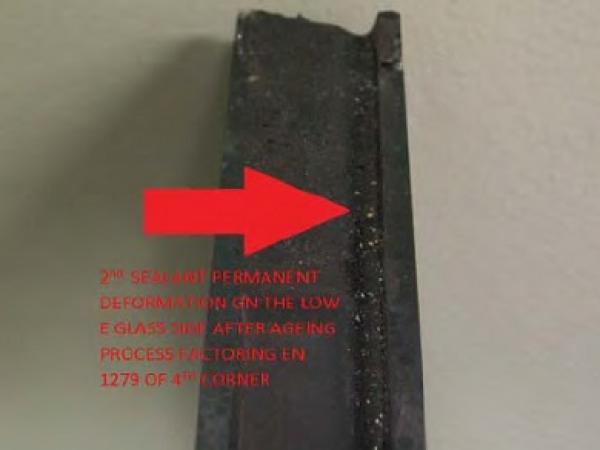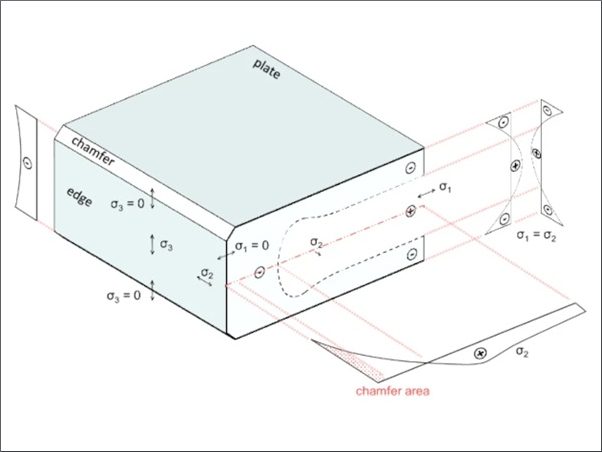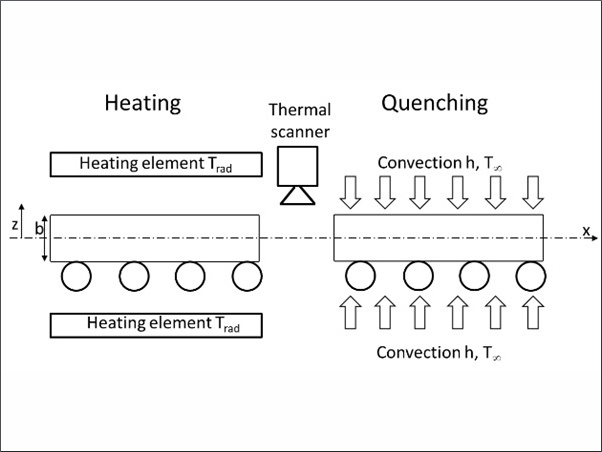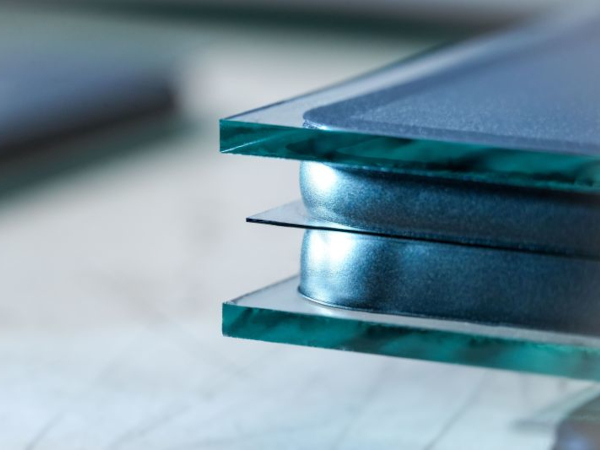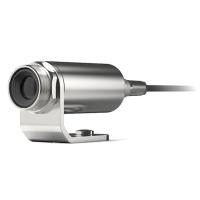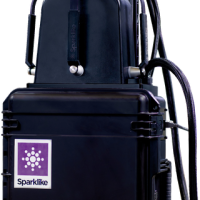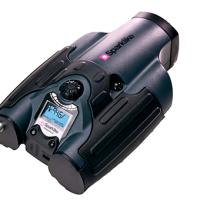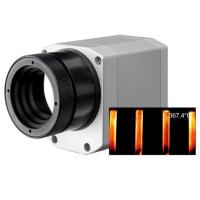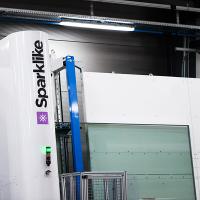The reason for this is that the market re-quires more and more products having UG values close to or lower than 1 W/(m2·K). This value is used by window producer to determine the overall thermal transmittance value.
Therefore, the need for a decrease in the linear thermal transmittance value along the perimeter (Ψ, in W/(mK)) has determined the usage of warm-edge spacers.
The types of warm-edge spacers used for the production of IGU are:
- The so-called “Rigid” spacers:
1. all-metal spacers (stainless steel)
2. plastic spacers with metal coating on the areas in contact with the sealants (combinations between metal and polypropylene or polycarbonate, etc.)
3. plastic spacers without metal coating.
- Organic spacers with integrated desiccant agent: all-butyl base or with silicone foam with different protections on the back, the so-called “Flexible” spacers.
1. Warm-edge spacers
New problems arose when using warm-edge spacers during the processing phase, which had not occurred in glazing units with (cut or bent) aluminum spacers. The main critical issues are the following:
“Rigid” spacers:
- Their internal section being smaller, spacers of the same length contain a smaller quantity of desiccant agent.
- Because of the high fl exibility of the frame, good manual skills are required for handling it and for the application on the glass, in order to prevent deformations
- which might cause the presence of disconnections between the fi rst and the second sealant as well as the lack or the abundance of external sealant in the finished product.
- During the bending, attention should be paid to the corners which need to have the right angle and should not exceed the spacer width, which would cause problems for the butyl application and the pressing.
- The application of butyl needs to be checked carefully, for shape and for frame flexibility.
- The adhesion test to the external sealant needs to verified. Particular attention needs to be paid to the two different spacer materials, which can detach each other.
- The bending, cutting and drilling machines need to be modified and adapted to the hardness of the steel back, as well to the plastic which requires appropriate tools. The waste issued from the plastic drilling process might plug the holes obtained with the machine for introducer the desiccant agent or the gas.
- To fill the gas through the holes, properly sized closure systems need to be used.
- Particular attention needs to be paid to the air exchange between the spacer and the cavity through the holes.
In addition to working problems, rigid warm-edge spacers present also some intrinsic differences compared to aluminum spacers. Warm-edge spacers have a different coefficient of linear thermal expansion from aluminum. Changing temperatures can result in a stronger stress on the butyl sealant, weakening the most important defense of the glazing unit from gas leakages and moisture penetration.
Table 1 here below shows the coefficients of linear thermal expansion of warm-edge spacer components. Only steel has a lower coefficient than aluminum.
Table 1. Coefficient of linear thermal expansion of warm-edge spacer components
Spacers are made of composite materials. Their expansion will therefore depend on the interaction of those materials.
“Flexible” spacers:
- Homogeneity of application of butyl on foam back.
- Extrusion temperatures and homogeneity of shape for the butyl types.
- Mechanical behavior during pressing.
- Joint closure.
- Material adhesion to the second sealant.
- High permeability of foams to the gas.
2. UNI 1279-2/3 tests on different compositions of insulating glazing units
The Stazione Sperimentale del Vetro launched a testing campaign to compare different materials - aluminum spacers and “rigid” warm-edge spacers. This campaign studied also the difference between glazing units made only of float glass and glazing units with low-emission glass which had undergone edge-coating removal. The following tests on samples manufactured in normal fabrication conditions were performed:
- Dew point.
- Initial gas concentration.
- Final gas concentration.
- Evaluation of the penetration index (I %).
- Measure of gas leakage (Li %).
The test outcomes led to the following findings:
- Dew point: in some cases, condensation appears on samples before ageing, whereas on the same samples no condensation was reported after ageing. According to one of the hypotheses formulated, the desiccant agent for some types of spacers takes a long time to absorb the moisture inside the glazing unit, due to inappropriate holes “drilling” and subsequent poor exchange of air in the cavity.
- Initial gas concentration: in general, the registered values fell within the limits provided for in the standards (+10%, - 5% with reference to the declared concentration).
- Final gas concentration (after ageing): in some cases a quite significant decrease (up to 10%) in gas concentration was registered.
- Initial moisture level in desiccants: it sometimes appeared high, proving that some types of spacers absorb moisture during storage.
- Evaluation of the penetration index (I %) and Li measure: the comparisons between the data collected in ITT tests, those obtained repeating the tests performed the year before and the tests carried out with “rigid” warm-edge spacers of 45 manufacturers are reported here below.
3. Penetration Index Values (I)
Samples with rigid warm-edge spacers and L.E. have higher average I values and dispersion, which are often over the limits permitted by the standards (I ≤ 20), as shown in figure 1.
In addition to the working problems mentioned above, one of the hypotheses is that this phenomenon is due to different stresses on the permeability profile by expansions of W.E. spacers subject to temperature range imposed by ageing cycles (+58°C; -18°C ). However, this hypothesis cannot explain such a widespread and sometime serious problem.
Figure 1. Normal distribution of penetration index of analyzed samples ( 45 factories; n° 721samples)
Figures 2 and 3 compare penetration index tests with warm-edge spacer performed in 2011 with those of 2012/13. It can be noticed that the normal distribution chart does not show any substantial difference between the tests of 2011 and those of 2012/13. In the frequency diagram the tests carried out in 2012-2013 evince the highest value for the class 2,5÷5,0 while whose carried out in 2011 show the highest for the class 7,5÷10,0.
Figure 2. Normal distribution of penetration index of glazing units with warm-edge spacer
Figure 3. Distribution frequency according to the I class for glazing units with warm-edge spacer
4. Measure of Gas Leakage (Li %)
Figure 4 compares the curve of normal distribution of gas leakage (Li %) ITT tests of 45 manufacturers with those of the same companies with warm-edge spacers and L.E. carried out in 2011, 2012 and 2013.
Figure 4. Normal distribution of gas leakage (Li%) on ITT samples with aluminum spacers and warm-edge spacer (45 factories; n°199 samples)
The samples fitting warm-edge spacers and L.E. show higher average Li % and dispersion values. Moreover, the average value for warm-edge spacers is very close to the limit permitted by the standards, with a consistent number of samples over the limit.
In figures 5 and 6 the comparisons between Li % values in samples with warm-edge spacers analyzed in 2011 and those tested in 2012 and 2013 are reported. In the samples of 2012/13 a decrease in gas leakage (Li %) and a lower data dispersion can be found. Moreover, gas leakage (Li %) ranges from 0.50 to 0.75 % for 37% of the samples of 2012/13.
Figure 5. Normal distribution of gas leakage (Li%) on samples with warm-edge spacer
Figure 6. Distribution frequency depending on the Li % class for glazing units with warm-edge spacer
5. Can edge-coating removal cause any problem?
Since very high “I” and “Li” values were reported in some cases, it was necessary to check if this was only due to the warm-edge spacer. To investigate this, we have tested samples with warm edge and with aluminium spacer both with removed L.E. glass produced in the same time in different factories. “Butterfl y tests” are carried out on a regular basis by these manufacturers and the edge-coating removal turned out to be always effective, because of the good adhesion between the glass and the sealant.
The test outcomes showed that, for at least 10 producer over 20, I and Li values were very high even with aluminum spacers for manufacturers whose I values had always been close to 5% for at least 10 years and Li values between 0.5 and 0.8 for I.T.T.
Some samples fi tting both warm-edge spacers and aluminum spacers with low-emission glass showed a permanent glazing unit deformation along the sealed edge of the low-emission sheet, after the ageing cycle. Figures 7 and 8 show the double glazing with a composition of 4/15/4 mm (with an expected overall thickness of about 23 mm).
Figures 7. 8. Sealant deformation on an IGU: with warm-edge spacer; with aluminum spacer
By way of example, table 2 shows the thickness after ageing of a standard IGU measured on the corners and at the center of the sides. A difference in thickness between the minimum and the maximum value is pointed out, in the order of 2 mm. Although the external sealant does not lose adhesion to the glass surface, it has undergone a permanent deformation on the low-emission glazing side.
Comparing these values with those of another glazing unit in table 3 and fi gure 9 , it can be noticed that in this case deformation occurred to a greater degree in corner No. 4, and not at the center as in the previous example.
It is necessary to analyze more thoroughly the interaction between the external sealant, the type of grinder and the coating removal process.
It is necessary to point out that the phenomenon:
- occurred with different grinder types and edgecoating removal methods;
- does not depend on the type of low-emission glazing;
- does not develop evenly on all sealant materials.
Conclusions
Our findings have proved that the outcomes of gas leakage tests with “rigid” warm-edge spacers improved with time. This is due to a greater knowledge of the critical issues and to the changes in the usage of this material. The penetration index tests, instead, have not highlighted signifi cant improvements yet, to reach the low level we had with traditional materials.
Although the results of our tests on “flexible” warm-edge spacers were not reported herein, at present only one tested glazing unit over five passes the gas leakage (Li %) test (that is 20% success).
The edge-coating removal process, which is now carried out on nearly all double glazing units, has proved to be a high risk factor to successfully pass the tests.
Unfortunately, EN 1279/2 and 1279/3 allows system validation for CE by testing glazing units with aluminum spacers and normal float glasses. However, these reports cannot ensure good durability for all material combinations.
This is why in our country, in order to be applied on products, the UNI voluntary mark requires specific tests to be carried out.
Table 2. Measure of the thickness of an IGU (No. 1)
Table 3. Measure of the thickness of an IGU (No. 2)
Figure 9. Sealant deformation on corner No. 4 of IGU No. 2
Acknowledgements
The technicians of SSV - SVP Laboratory, Mrs. A. Moro, Mr. L. De Riu, Mr. A. Stevanato and Mr. M. Cristofoletti are acknowledged for the execution of experimental tests during many years of activity in our Laboratory.
Authors
Ennio Mognato, Stefano Brocca
SSV - Stazione Sperimentale del Vetro
Murano, Venice
email: mail@spevetro.it


